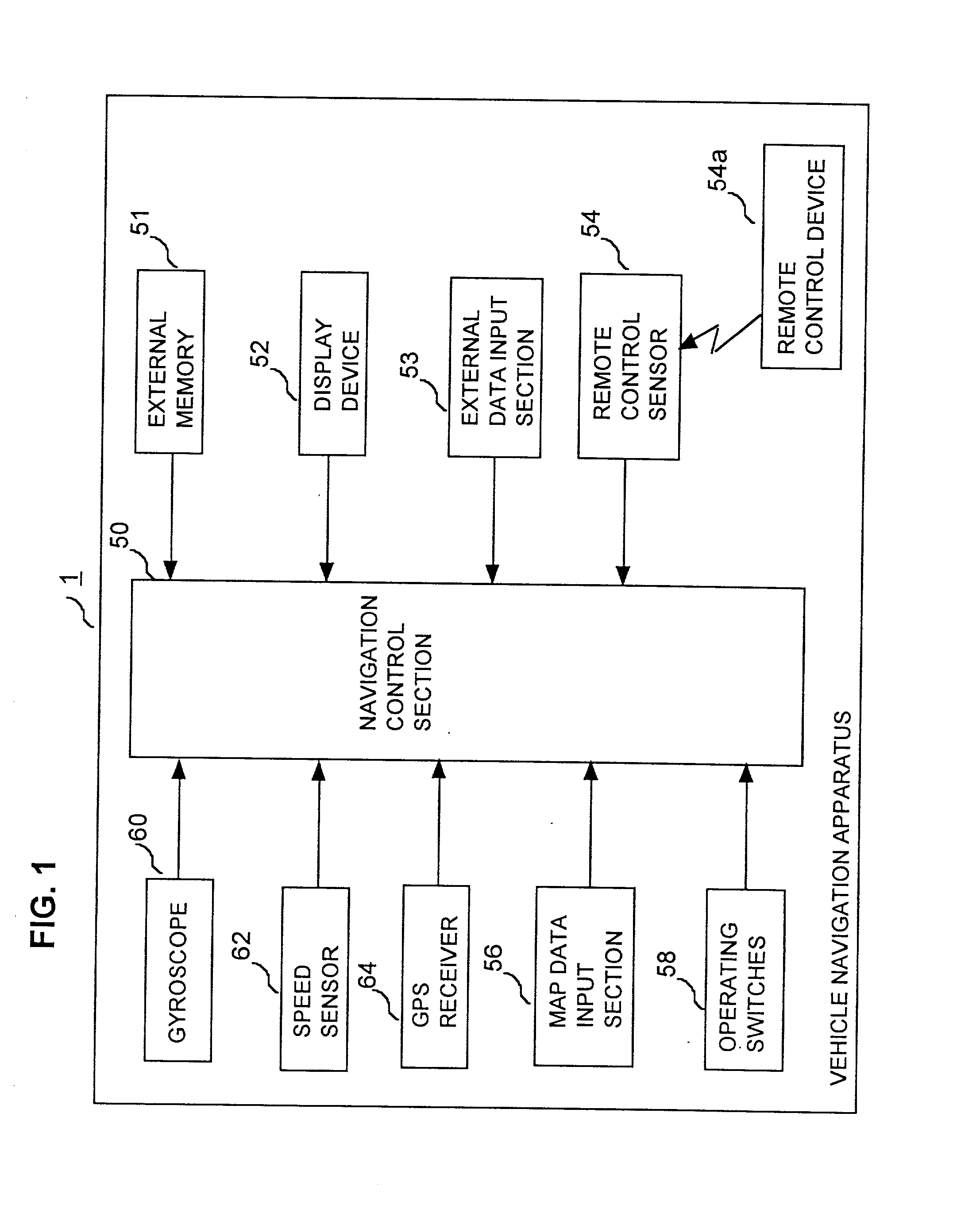With such a method, on-board sensors of the vehicle itself are used to detect the vehicle position and travel direction, so that there is the
disadvantage that it is not possible to obtain absolute position values.
The effects of such drift and offset errors will be cumulative.
However with the GPS
system (as available for public use), the absolute position and direction estimates which are obtained thereby contain substantial amounts of randomly varying error, which may have a magnitude of up to approximately 100 meters in the case of position estimates.
The successive relative position and travel direction estimates which are obtained from the dead reckoning calculations on the other hand will contain relatively small amounts of such randomly varying error, under a normal condition of operation of the vehicle, but may contain significant amounts of drift and offset error, for the reasons mentioned above.
However substantial amounts of error may arise in the estimated vehicle travel direction that is derived by such an apparatus, under some special circumstances.
(a) The
gain error of the
gyroscope will cumulatively increase as the successive turns are executed, even if the detection axis of the
gyroscope is correctly oriented with the turning axis of the vehicle and the
gyroscope is mounted correctly in relation to the direction of the action of gravity under normal driving conditions. Specifically, when driven up the ramps within a multistory car park, and thereby performing successive turns, the attitude of the vehicle will be altered due to vehicle roll to the left or right side as the successive turns are executed, and due to the lateral axis of the vehicle becoming tilted (i.e., occurrence of
pitch) by the slope of the ramps. Such changes in the vehicle attitude may cause changes in the orientation of the detection axis of the gyroscope in relation to the direction of action of gravity. As a result, the
conversion factor of the gyroscope will change, so that the
conversion gain will contain a
gain error. Furthermore, errors due to variations in offset will cumulatively increase, when the vehicle executes such repetitive turns, so that this error will also become large. As a result, after completing such a succession of turns within a multistory car park, the estimated vehicle direction that is then obtained by dead reckoning calculation using the gyroscope may contain a large amount of error.
(b) In general, it will be difficult or impossible to receive GPS radio
waves when the vehicle is located within such a multistory car park, so that it will not normally be possible for the vehicle navigation apparatus to effect correction of the estimated travel direction based on GPS-
derived data.
(c) Even if acquisition of GPS position measurement data is possible under such a condition (e.g., immediately following completion of such a succession of turns) it will in general not be possible to apply appropriate
map matching processing to the results, (since the vehicle is not located on a street or highway), so that the GPS position measurement data cannot be used in accurately correcting the error which arises in the estimated travel direction.
However when a sudden abnormal change occurs in that series of travel direction estimates, for a reason such as described above, then even if acquisition of the
GPS positioning data can be achieved immediately after the vehicle begins to be driven thereafter, a significant amount of time will elapse before the position and travel direction estimates that are derived from the filter processing will be of sufficient accuracy to enable successful
map matching processing to be performed.
As a result, when the vehicle starts to be driven after such a special condition has occurred, a certain amount of
delay may occur before the vehicle navigation apparatus begins to generate an accurate display of the vehicle current position and travel path, i.e., a
delay during which there may be a large amount of error in the information displayed by the vehicle navigation apparatus.
 Login to View More
Login to View More  Login to View More
Login to View More 


